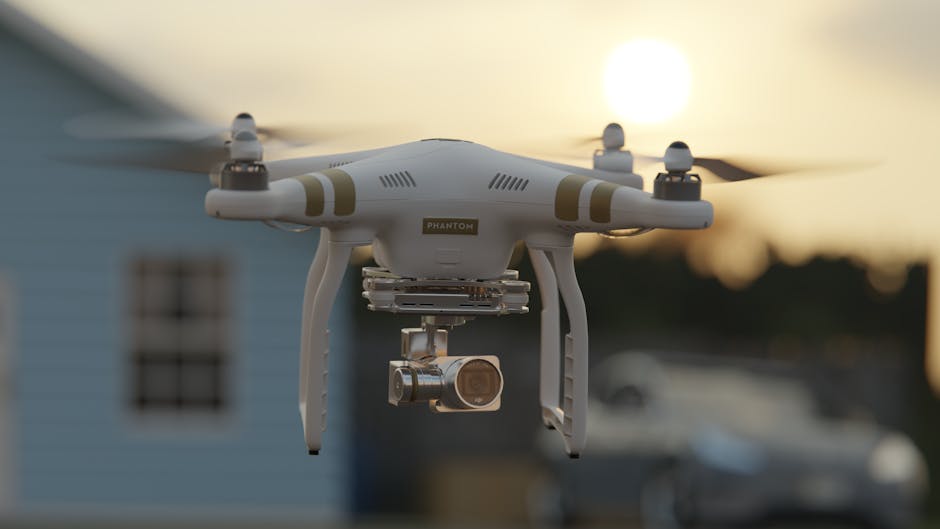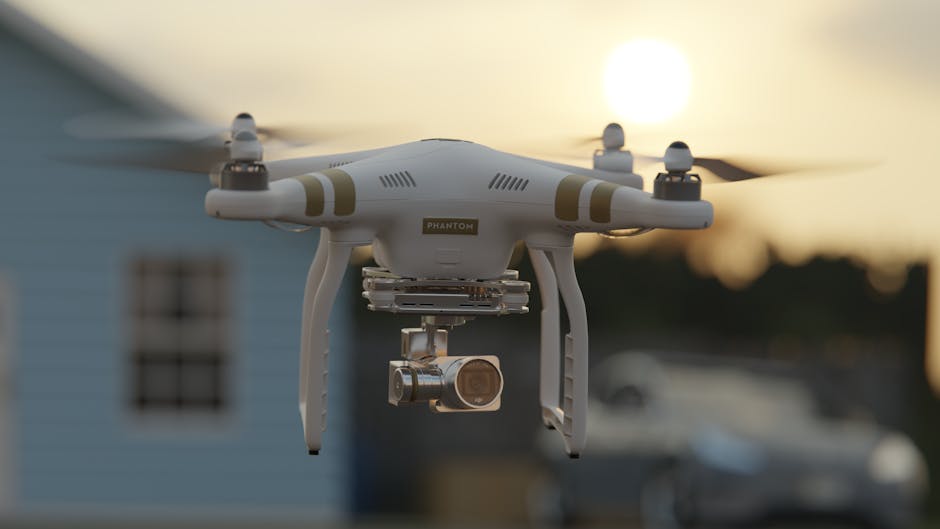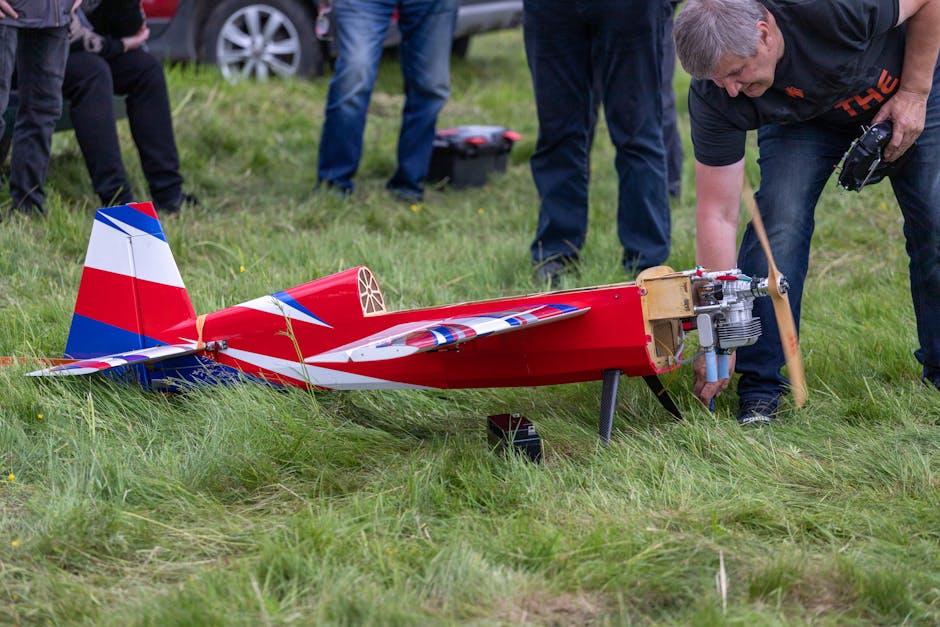Introduction to Drone Kits: A Journey From Leisure to Innovation
Drone kits started as simple playthings, meant to entertain hobbyists and tech enthusiasts. Fast forward, and these kits have transformed into sophisticated gadgets serving a plethora of purposes beyond just fun. Initially, building a drone was more about piecing together a basic frame and adding simple electronics. Nowadays, it’s a dive into advanced technology, where drones are equipped with high-resolution cameras, GPS, and even AI capabilities. This evolution from leisure to innovation showcases the incredible journey of drone kits. Whether for aerial photography, surveying land, or even delivering packages, drones have expanded their reach, proving their worth in both personal and professional spheres. The leap from simple toys to intricate gadgets highlights not just technological advancement but also a shift in how we view and utilize drones today.
The Early Days: Drone Kits as Simple Playthings
Back in the day, drone kits were pretty basic—think of something a kid might build with a couple of pieces snapped together, maybe with a simple remote control if you were lucky. These early drones were more about fun than function, flying them around your backyard for the thrill of it rather than any practical use. They were simple playthings, nothing like the high-tech gadgets we see today. Most of these initial drone kits didn’t come with cameras, and their flight capabilities were limited. You could push a button, and off they’d go, but keeping them in the air and steering them was a hit or miss. The technology was in its infancy, which meant that these early versions were more for hobbyists and enthusiasts who loved the idea of flight rather than anyone looking for a drone to do more sophisticated tasks.
The Rise of Consumer Drones: A New Era Begins
Drones used to be fancy toys, something most people saw as a fun gadget without much practical use. That view has shifted dramatically. Today, drones aren’t just toys; they’re tools. They’ve become a part of our everyday lives, changing how we capture events, monitor crops, and even deliver packages. This transformation kicked off when technology improved and prices dropped, making drones accessible to more people. Early drones were hard to control and required a lot of technical know-how. But as technology advanced, drones became easier to fly, with features like auto-pilot and collision avoidance making them user-friendly. The real game-changer was when cameras got added. Suddenly, drones opened up a new world for photographers and videographers, allowing for shots that were impossible before. Now, with even more sophisticated sensors and AI capabilities, drones are doing things we once only dreamed of, from fighting fires to conducting search and rescue operations. The rise of consumer drones marks a new era, one where the sky’s no longer the limit.
Technology Breakthroughs Shaping Drone Kit Evolution
The evolution of drone kits is driven by major technology breakthroughs, making drones from simple toys to advanced gadgets. It starts with improvements in battery life. Today’s drones fly longer on a single charge, thanks to lithium-polymer batteries. Next, we’ve got enhancements in camera tech. Drones now capture crisp, high-quality videos and photos from the sky. GPS technology has been a game-changer too. It allows drones to hover in place, return home, and follow specific routes automatically. Then there’s the advancement in materials. Lighter and stronger materials mean drones can carry more weight and withstand tougher conditions. Lastly, the development of user-friendly software has made it easier for anyone to pilot drones, opening up the skies to more people. These breakthroughs have collectively transformed drone kits from simple leisure activities into sophisticated tools for photography, surveying, and even delivering goods.
Drone Kits Today: Features and Capabilities
Drone kits have come a long way from just being simple toys. Today, they are packed with sophisticated features and capabilities. First off, many modern drones now come with high-resolution cameras, allowing for stunning aerial photography and videography. They also boast impressive flight times, some reaching up to 30 minutes on a single charge. GPS integration is another standout feature. It lets drones track their position and return home automatically if needed. For those into tech, programmable drones offer the chance to code your own flight paths and maneuvers. Not to mention, stability and speed controls make flying easier for beginners and provide thrilling experiences for seasoned enthusiasts. In essence, drone kits today merge fun and innovation, opening up possibilities for hobbyists and professionals alike.
The Professional Turn: From Hobbyists to Industrial Uses
Drone kits started as simple toys for hobbyists, but now, they’re not just toys anymore. They’ve taken a professional turn, diving into industrial uses, showing how versatile they’ve become. Companies use drones for everything from inspecting pipelines and tall buildings to surveying farmland and delivering packages. What changed? Technology got better, and so did the skills of the people flying them. Drones now carry high-resolution cameras, thermal sensors, and sophisticated navigation systems. This shift means drones are now essential tools in construction, agriculture, security, and even filmmaking. The leap from hobbyists tinkering in their backyards to professionals using drones in their day-to-day operations shows just how much the game has changed. This isn’t about flying for fun anymore; it’s about improving efficiency, safety, and getting the job done in ways we hadn’t imagined before.
DIY vs. Ready-to-Fly: Understanding the Shift in Drone Kit Preferences
Back in the day, drone kits were mostly DIY - you got parts and put them together yourself. This was cool for hobbyists who enjoyed tinkering and customizing every little bit. But, as drones got more popular and tech improved, there’s been a big shift toward Ready-to-Fly (RTF) models. Why? Well, for starters, RTF drones save you the headache of assembly. They’re like buying a bike fully built - you just hop on and ride. You don’t need to know how to solder wires or calibrate sensors. This is a big win for people who just want to fly without the fuss.
Another thing, tech advancements mean today’s drones come packed with features unimaginable a few years ago – from high-res cameras to auto-pilot capabilities. This sophistication requires precision engineering that’s hard to replicate in a DIY setup without significant skills and investment.
But it’s not all gloomy for DIY enthusiasts. The DIY route still offers unmatched customization. Want a drone that can carry a specific camera or sensor? Building your own might be the way to go. Plus, there’s something uniquely satisfying about flying a machine you’ve put together with your own hands.
So, here’s the rundown: RTF drones are great for those who prioritize convenience and advanced features straight out of the box. DIY kits, on the other hand, cater to those who love the building process and want a fully customized drone. Each has its place, driven by different user needs and the blistering pace of technological evolution.
The Impact of Regulations on Drone Kit Development and Use
Government rules have shaped drone kit evolution more than you might think. When drones started buzzing in the skies, governments worldwide scrambled to set up rules to keep things safe. These regulations cover everything from where you can fly drones to how heavy they can be without needing a special license. For starters, drones heavier than a certain weight must be registered. This pushed makers to design lighter drones that still packed a punch. Also, flying near airports or over big crowds? Big no-no. This led to drones with smart tech to avoid no-fly zones. Plus, privacy concerns meant adding features to protect people’s privacy from cameras in the sky. So, drone kits have had to smarten up, becoming not just more sophisticated but also better neighbors in the sky. This dance with regulations keeps pushing drone technology forward, making each version smarter, safer, and more fun to use.
The Future of Drone Kits: Trends and Predictions
The future of drone kits is taking off in exciting directions, and there are a few key trends and predictions that are steering the industry. First up, drones are getting smarter. Thanks to advancements in AI and machine learning, drones are becoming more autonomous, capable of doing complex tasks with less human intervention. This means in the not-too-distant future, drones could be making deliveries or conducting surveillance without much help from us.
Next, expect to see drones becoming more integrated into everyday life. As regulations evolve to catch up with technology, we’ll likely see drones popping up in more sectors, from agriculture to emergency services, playing roles in crop monitoring, search and rescue missions, and maybe even as flying taxis.
Another trend to watch is the rise of eco-friendly drones. With the world paying more attention to environmental impact, the demand for drones powered by renewable energy sources, or those designed with biodegradable materials, is set to increase.
Lastly, personalization is becoming a big deal. Drone kits are likely to offer more customization options, allowing users to tweak them for specific tasks or to reflect personal aesthetics. This means drone enthusiasts can not only look forward to drones that are more capable but also drones that can be more of a personal statement.
Together, these trends paint a picture of a future where drone kits are not just more sophisticated and versatile, but also more integrated into the fabric of our daily lives, and even kinder to our planet. Keep an eye on the sky—the next few years are going to bring some remarkable changes.
Conclusion: The Continuous Evolution of Drone Kits
In wrapping up, it’s clear that drone kits have journeyed from being simple playthings to becoming advanced gadgets that blend innovation with functionality. This evolution signifies not just a leap in technology but also a broadening of the scope for hobbyists, professionals, and tech enthusiasts. What started as a straightforward kit has morphed into sophisticated systems capable of intricate maneuvers and tasks. The journey of drone kits reflects a broader trend of technological advancement and adaptability. As we look ahead, the potential for further innovation and evolution in drone kits remains vast and exciting. The sky’s no longer the limit; it’s just the beginning.






Leave a comment
This site is protected by hCaptcha and the hCaptcha Privacy Policy and Terms of Service apply.